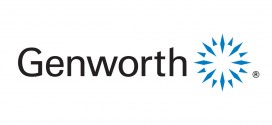As college costs continue to rise, having a college degree is more important than ever. According to studies by the College Board in 2011, those with college degrees earn 74% more than high school graduates, experience higher job satisfaction and have lower unemployment.
For parents like me, college tuition costs can be sizeable. In the same aforementioned study, the cost of one year at a public university averaged more than $20,000 while a year at a private school exceeded $28,000.
Arguably the most popular college savings plan being promoted by financial professionals and utilized by families nationwide is the 529 college savings plan (529 plan). Depending on which state you live in, the features and benefits of these plans can vary. For example, in my home state of Virginia, the only investment option available for 529 plans is the American Funds. However, in other states, investors must choose among different mutual fund companies.
What Is a 529 Plan?
The following definition of a 529 plan was taken directly from American Funds’ website (www.americanfunds.com):
“Named after Section 529 of the Internal Revenue Code, 529 savings plans provide a tax-advantaged way to save for qualified higher education expenses. These plans are generally sponsored by individual states, while plan assets are professionally managed by independent investment firms or state government agencies.”
529 Plans – Key Features and Benefits
- Save for anyone: With a 529 Plan, investors can save for anyone—their child or grandchild, niece or nephew, friend or even themselves.
- Tax advantages: Earnings in 529 accounts can grow free from federal tax, withdrawals for qualified higher education expenses are free from federal tax, and some states also allow for a deduction or credit against contributions.
- Contribution limits: Investors can contribute up to $14,000 ($28,000 for married couples) annually without gift-tax consequences. Under a special election, you can invest up to $70,000 ($140,000 for married couples) at one time by accelerating five years’ worth of investments.
- Income limits: There are no income limits, so investors can contribute regardless of how much income they earn.
- Investment flexibility and options: Though plans are administered by individual states, investors can choose among many types of investment options, regardless of where they live. These investment options can also be changed, but investment allocation changes can only be done at certain times on an annual basis.
- Control: The investor, as the account owner, rather than the beneficiary, maintains full control of all account assets and determines the timing and amount of distributions.
- Beneficiary options: Investors can change beneficiaries, without penalty, provided the new beneficiary is a member of the previous beneficiary’s family.
Whole Life Insurance as a College Savings Plan?
Although rarely discussed as the ideal college savings plan, a solid argument can be made for using whole life insurance versus a 529 plan. So for argument and illustrative purposes, I will refer to the whole life insurance option as a “whole life plan.”
Wait a minute. Did I just say that whole life insurance can be a better college savings plan than a 529 plan? Yes, I absolutely did.
Far too many financial professionals, families and investors get caught up in focusing on “the name” of their plans and investments. For example, it is traditionally common, popular and acceptable for a retiree to mention that their retirement savings plan is a 401(k) or an IRA, but not so much to say it’s a variable annuity plan. Likewise, it is traditionally common, popular and acceptable for parents and grandparents to say their college savings plan is a 529 plan, but not so much to say a whole life plan.
Therefore, rather than focus on the name of the college savings plan of choice, the right thing to do is to compare and contrast these two options, focusing solely on the facts, features and benefits.
Whole Life Plans – Key Features and Benefits:
- Save for anyone: Investors in a whole life plan can also save for anyone—their child or grandchild, niece or nephew, friend or even themselves. However, a whole life plan offers the ability to save for any person, regardless of their relationship to you, as well as save for any company, institution or charity an investor may choose.
- Tax advantages: Whole life plan cash value earnings also accumulate on a tax-deferred basis and, if managed properly (via withdrawals and/or loans), can also be withdrawn on a 100% tax-free basis.
- Contribution limits: Similar to 529 plans, whole life plans have certain contribution limits, particularly within the first seven years. However, most whole life plan contribution limits can be structured to exceed the limits of a 529 plan, and they are also not limited to the $350,000 lifetime limit of a 529 plan.
- Income limits: Just like 529 Plans, there are no income limits, so any investor can contribute regardless of how much income they earn.
- Investment flexibility and options: Although whole life plans cannot offer investment upside potential, they do offer no downside investment risk. For many investors, the peace of mind associated with safety and guarantees are far more attractive, particularly when saving for a specific time frame or goal (such as retirement or college savings). In addition, whole life plans cash values offer more competitive “safe money” interest rates versus alternative fixed-interest rate vehicles (which are contractually guaranteed), as well as the potential for annual dividends.
- Control: The investor, as the account owner, rather than the beneficiary, maintains full control of whole life plan cash values and determines the timing and amount of distributions.
- Beneficiary options: Similar to a 529 plan, investors can change whole life plan beneficiaries without penalty, at any time, and for any reason. However, unlike the family beneficiary restrictions of a 529 plan, a whole life plan allows you to change the beneficiary to any person, institution or charity, as well as choose as many beneficiaries to receive whatever percentage they deem appropriate.
Whole Life Plans: EXTRA Features and Benefits that 529 Plans Cannot Offer
- Guaranteed completion: Arguably the biggest advantage of a whole life plan is the ability to guarantee that an investor’s college savings plan will self-complete under all circumstances.
a. Death – With a 529 plan, in the event of a premature death or unexpected disability an investor’s college savings plan can only offer whatever money has accumulated up to that point. However, whole life plans have contractual life insurance guarantees that provide large amounts of wealth to be used for college savings (or any other purpose) in the event of a premature death.
b. Disability – In the event of an unexpected disability, an investor is very likely to lose their ability to temporarily or permanently continue funding their 529 plan. However, whole life plans offer the option to add an affordable disability rider, which contractually guarantees that, in the event of an unexpected disability, the policy premiums will be made by the insurance company and the cash value will continue to accumulate. (Note: This rider carries a small additional cost as well as age restrictions.)
- Unlimited money options: If you withdraw money from a 529 plan for reasons other than specifically for qualified higher educational purposes, your earnings will be subject to federal income tax and possibly a 10% federal tax penalty. However, the cash value in a whole life plan can be used for any purpose whatsoever, whether related to education or not (for example: joining a fraternity or sorority, buying a car, food, clothing, spending money, etc.). In other words, a whole life plan can essentially be used as your own bank account.
- No taxes or penalties: There are many instances where college saving plans are simply not needed, wanted or utilized. For example, children or grandchildren may receive college scholarships, join the military or simply choose not to attend college. Whole life plan cash values provide important access and flexibility to change your plans for your college savings at any time, for any reason.
- No financial aid restrictions: A robust 529 plan can negatively impact a student’s chances of tapping into various sources of financial aid. However, another important advantage of a whole life plan is the ability to shelter funds from the federal financial aid methodology via the cash value.
- Ownership change permitted: Unlike 529 plans, a whole life plan offers the ability to change the ownership of the policy at any time for any reason. By changing the ownership in a whole life plan, this effectively changes both the accumulated cash value as well as the death benefit.
When choosing a college savings plan, our job as financial professionals is to provide education, personalization and customization. Both 529 plans and whole life plans are excellent college savings plans, and clearly neither is the best option for every client.
There are also other college savings options to review and consider, such as a Uniform Gift to Minors Account (UGMA), Uniform Trust to Minors Account (UTMA), Coverdell Education Savings Accounts and regular investment accounts.
Hopefully this article serves as a valuable guide to help determine if a whole life plan is a better fit and more suitable option for your clients.
 AgenteNews Insurance Producer's Online Resource
AgenteNews Insurance Producer's Online Resource





